Hydraulic Breaker Hammer Working Principle
A hydraulic breaker hammer is a type of construction machinery that is mounted on excavators, backhoes, skid steers, mini-excavators, and stationary plants.
Driven by hydraulic power it breaks rocks into smaller sizes or demolishes concrete structures into manageable pieces.
This engineering article classifies the hydraulic breaker hammer working principle, or How does a hydraulic breaker hammer work.
It contains a lot of great technical information.
If you have an engineering background, this section will help you understand the technical aspects of how a hydraulic hammer works and operates.
If you think these flow charts are tedious and tough to understand, you can move straight to the conclusion.
To clarify the technical process of the working principle, four images and one video are going to be used as below.
For starter, watch the short video for a brief understanding.
Then look further for the technical information.
Remarks
- 1-8 means chambers of oil flow
- Red areas are full of high-pressure oil flow
- Blue areas are full of low-pressure oil flow
- Chambers 3, 7 always have low pressure because they connect to “out”
- Chambers 1, 8 always have high pressure because they connect to “in”
- The pressure in chambers 2, 4, 6 changes with piston movement
- High-pressure oil enters and fills chamber 1 and 8, acting on the piston end-face and pushing it upward.
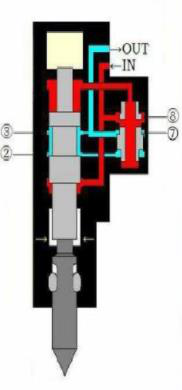
2. When the piston moves upward towards its limit, chamber 1 and 2 get connected and oil flows from chamber 2 to 6.
The control valve moves upward due to the difference in pressure (oil pressure in chamber 6 is higher than in 8).
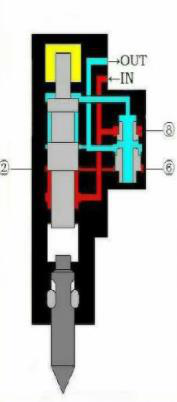
3. When the control valve reaches its upper limit, the input hole connects to oil flow in chamber 8, which makes oil flow into chamber 4.
Owing to the high oil pressure of chamber 4, together with nitrogen backups, the piston travels down.
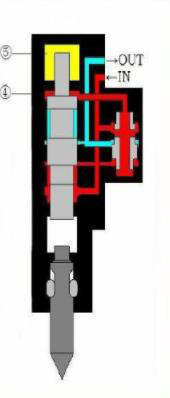
4. When the piston travels down and hits the chisel, chamber 3 and 2 get connected, and they both connect to chamber 6.
Because of the high oil pressure in chamber 8, the control valve travels down and the input hole connects to chamber 7 again.
Then a new circulation begins.

Conclusion
One sentence is enough to sum up the hydraulic hammer working principle: “The relative position change of piston and valve, which is driven by oil flow going “in” and “out,” transforms hydraulic power into impact energy.”
To know more about hydraulic hammers, visit “the ultimate buying guide on hydraulic breaker hammers“.
Hydraulic Breaker Structure
In order to understand how a hydraulic breaker hammer works, or what hydraulic hammer working principle is, the structure and major components need to be known.
A hydraulic breaker hammer consists of three major parts: back head (nitrogen chamber), cylinder assembly, and front head.
We’ll come to them separately.
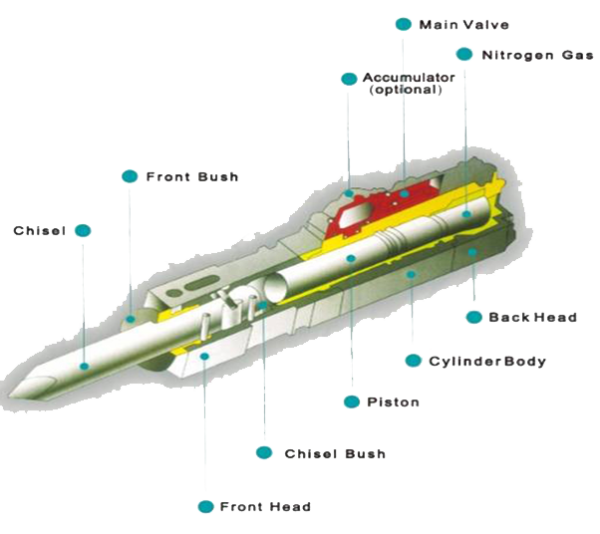
1. Back Head (Nitrogen Chamber)
The back head is a chamber for storing nitrogen.
When placed under high pressure, this nitrogen-filled chamber acts like a damper upon the return piston-stroke.
It also works like an impact enhancer when the piston travels down.
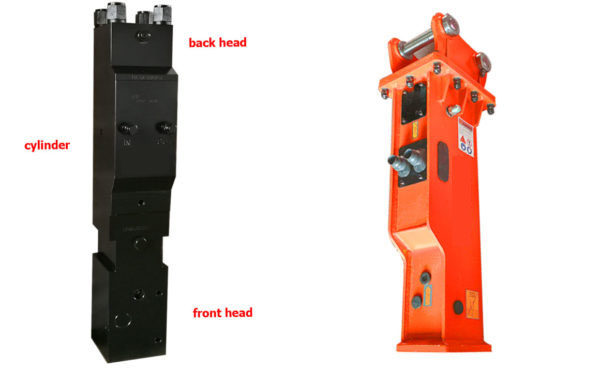
2. Cylinder Assembly
The cylinder assembly is the core part of a hydraulic breaker hammer.
It mainly consists of a cylinder, a piston, and a control valve.
The piston and the valve are the only two moving parts of a hydraulic breaker hammer.
The piston moves up and down and hits on the tool, while the valve rotates to control the oil flow’s direction.
It is the place where movement happens and where the hydraulic power is generated.
With the main valve controlling the oil, the hydraulic flow drives the piston movement to generate impact energy.
A set of seal kits are put inside the cylinder to prevent oil leakage.
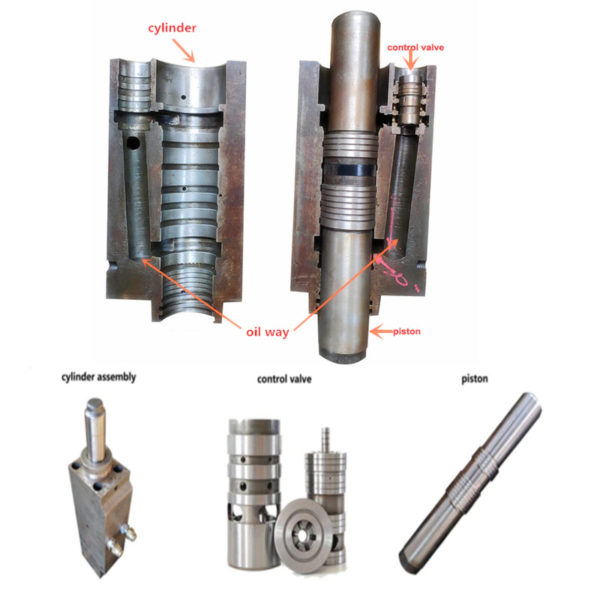
3. Front Head
This is where the piston connects with the chisel (or working tool).
The chisel is fixed with bushes and pins, which are the parts that need to be replaced most frequently.
The front head touches the working surface directly, and a box-type housing could protect it from wearing and lead to longer service life.
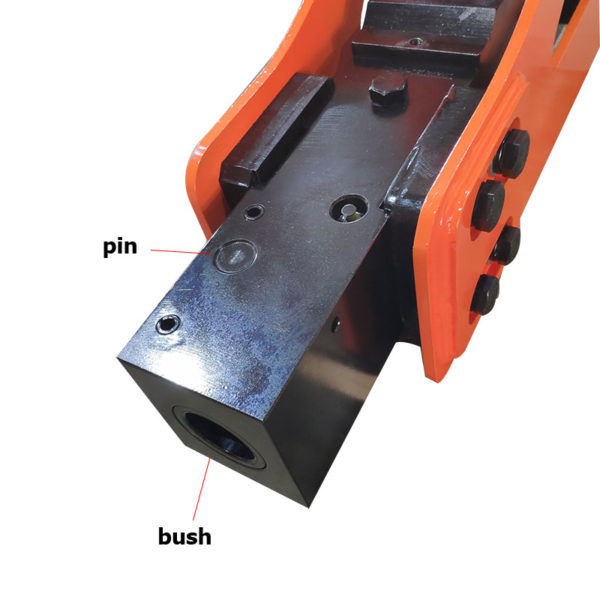
This article is authorized and published by Robin Zhang, an veteran in hydraulic industry and construction equipment.
Follow me on SNS to know more knowledge regularly.

